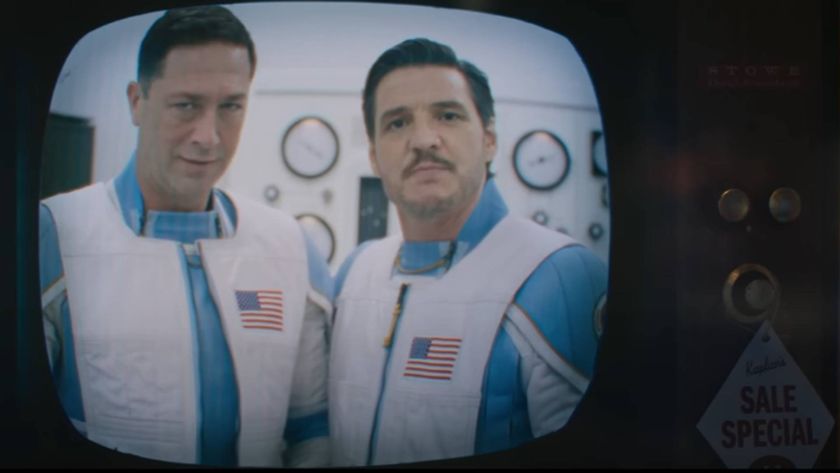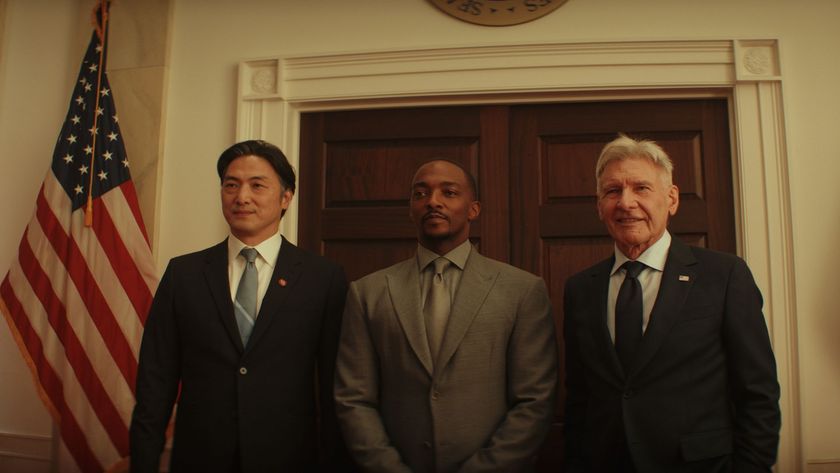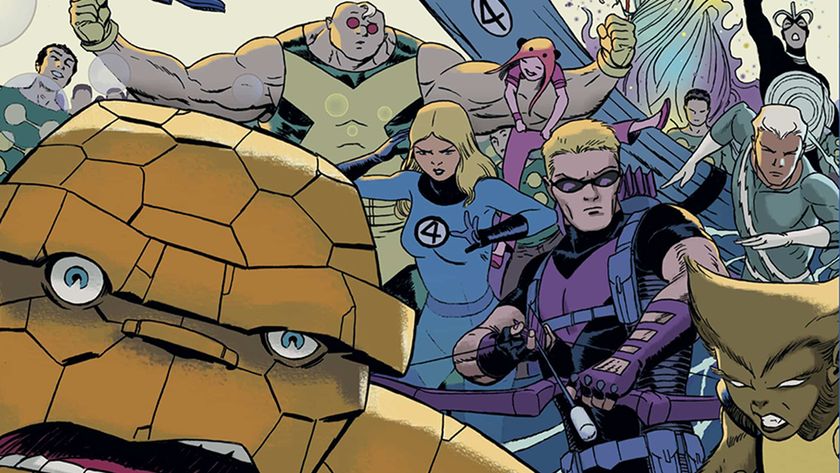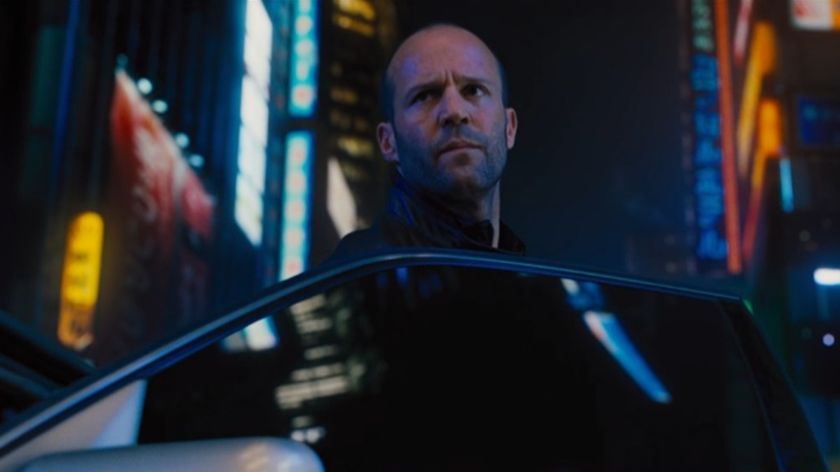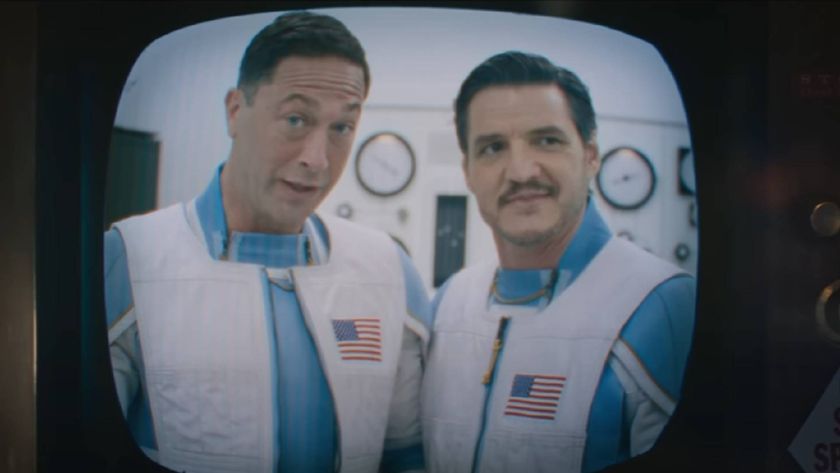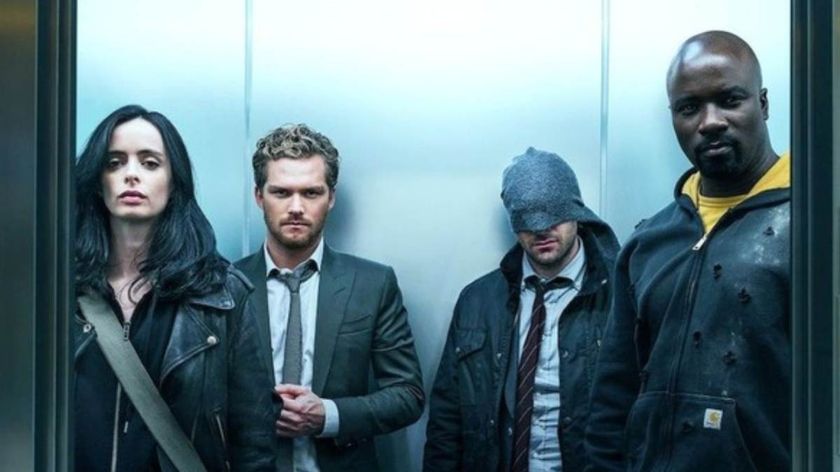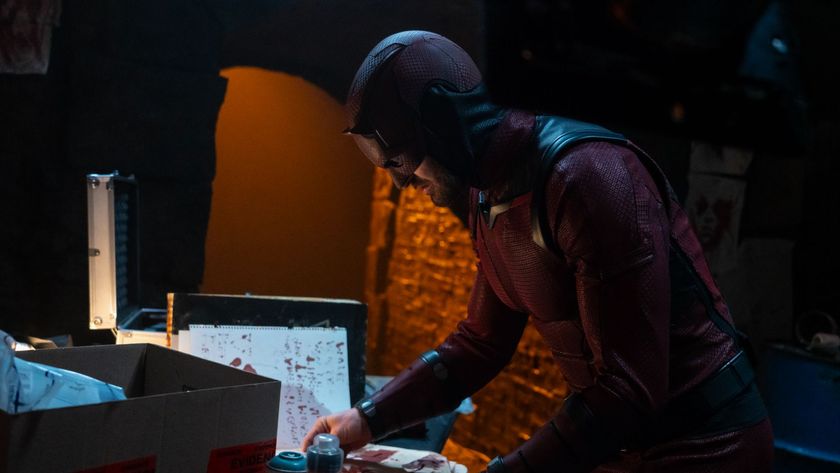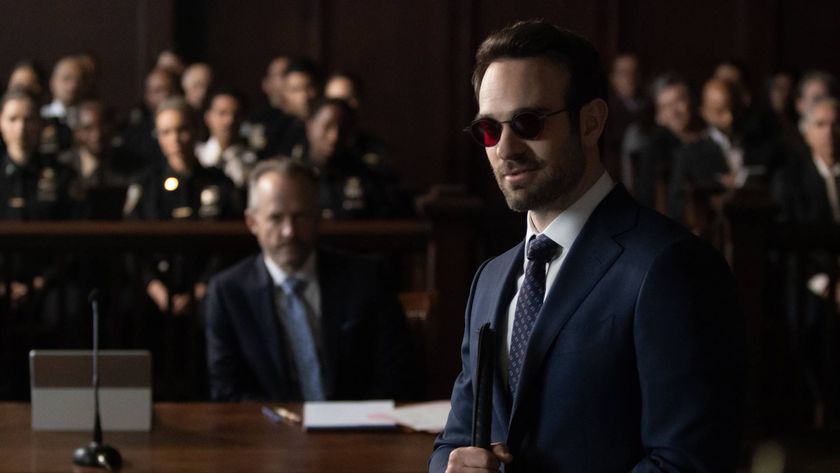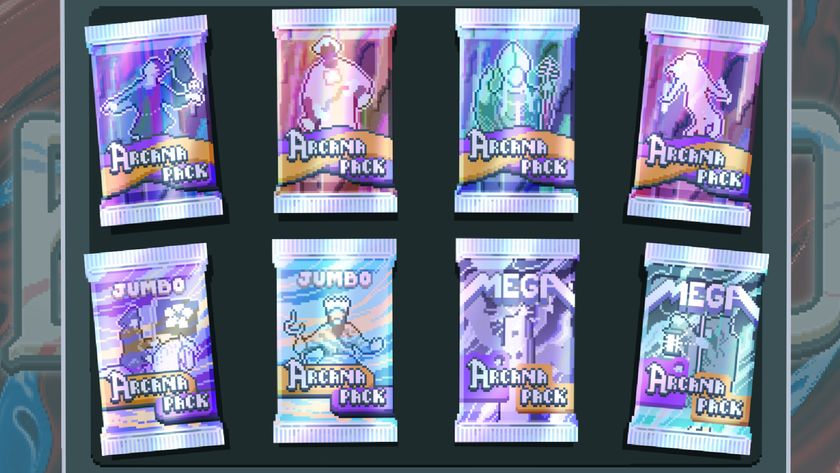The Marvel Universe lives and breathes thanks to the talent and creativity of human artists
AI art, Stan Lee, and Marvel's complicated history with properly crediting artists
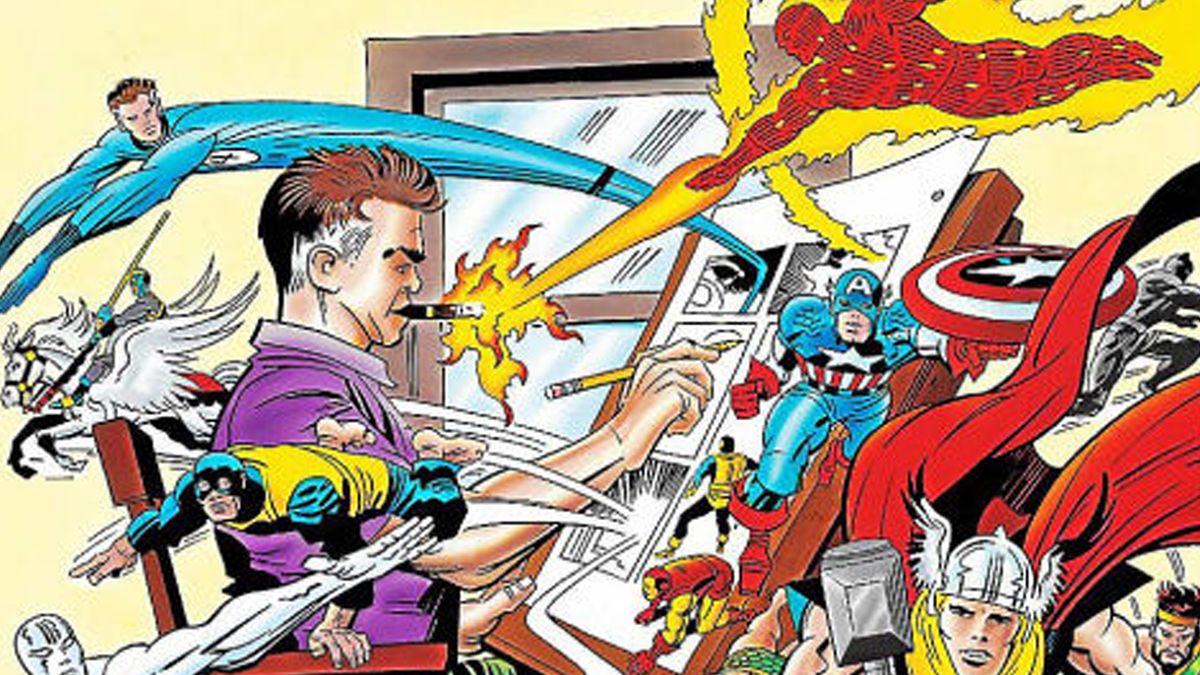
The cat's well out of the bag by now that Marvel Studios' Secret Invasion streaming series features an apparent first for the studio: an opening credit sequence generated, at least in part, by a learning model AI. The dubious milestone has now been well-publicized, becoming a central battleground in the current debate in the world of art, film, and media over whether content from generative learning model algorithms, colloquially known as AI art, has a place in a professional creative environment.
The credits sequence has generated so much controversy that Method Studios, who oversaw the generation of the credits, issued a response clarifying that using AI for the credit sequence "cost no jobs" - one of the central disagreements in the question of how or if AI generated imagery should be used in film productions and other media. The statement also adds that the "entire process, guided by expert art direction, encompassed the initial storyboard phase, illustration, AI generation, 2D/3D animation and culminated in the final compositing stage," while utilizing "custom and existing AI tools."
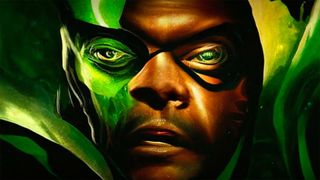
But this statement dances around some of the most important questions about AI art and its place in creative industries, especially in relation to Marvel. Learning model AI art is created, by necessity, through analyzing millions of images and videos that are seemingly often sourced from around the internet - the incalculably vast majority of which is used to train learning model AI generation programs without any permission, input from, or compensation to the artists who originally created this 'inspirational' content.
Furthermore, it's almost impossible to credit the artists whose work has been scraped to generate a specific image or set of images, even as some AI art users attempt to recreate the work of certain artists without their permission, and usually against their wishes.
Method Studios' own statement indicates that such a model was used at least in part for the credits. This move from totally handcrafted credits sequences made by the hands and eyes of human artists strikes a punishing blow at the culture of art at Marvel Studios, a company which has already notoriously taken direct inspiration from comic book artists while offering the bare-minimum credit and compensation, if any.
For example, the entire credits and marketing scheme of the recent Hawkeye streaming series were directly inspired by the iconic work of artists David Aja and Matt Hollingsworth on 2012-2015's fan-favorite Hawkeye comic title - though you'd be hard-pressed to know judging solely by the credits presented in that very sequence.
And this is part of a concerning trend at Marvel Entertainment to historically downplay, misrepresent, and even ignore the necessary contribution of human artists not just to the stories they draw, but in the creation of the characters they depict and the very Marvel Universe itself.
Comic deals, prizes and latest news
Get the best comic news, insights, opinions, analysis and more!
Just as Secret Invasion is drawing criticism for its AI art credits, Disney Plus has presented the second part of a one-two punch of material that downplays the role of artists in the origins of Marvel Comics in the simply titled Stan Lee, a documentary exploring the life of the legendary Marvel writer/editor/spokesman in his own words.
Though the documentary is charming, and Lee is as gifted at verbal storytelling as he is at crafting comic narratives, it gives an unchecked platform to the longstanding myth that Stan Lee personally created the characters and concepts of the Marvel Universe with only secondary contributions from artists such as Jack Kirby, Steve Ditko, Don Heck, and many more. It even prompted a lengthy response from the estate of Jack Kirby, calling into question the documentary's depiction of historical events.
My father Neal Kirby (Jack Kirby’s son) has asked me to post this written statement in response to the Stan Lee documentary released yesterday on Disney+. pic.twitter.com/V4be2xyEJgJune 17, 2023
By the documentary's end, it does engage somewhat with the controversy, including a notorious recording of a conversation between Lee and Kirby from the '80s in which they directly debate who deserves credit for originating the stories, characters, and ideas of classic comics such as Fantastic Four, Incredible Hulk, Iron Man, Thor, and other Lee/Kirby co-creations. However, it does little to present any alternate narratives for the creation of these characters along with the X-Men, Spider-Man, and more, repeating Lee's own self-aggrandizing, apocryphal tales for his sole inspiration in their creation.
A perfect example of this mythologizing is the retroactive addition of Lee's self-purported inspiration to metaphorically represent the civil rights struggle of the '60s in the characters of the X-Men - a metaphor that didn't actually take direct hold in the comics till several years into its run but which Lee cites as his early inspiration for the characters.
In contrast, the well-documented history of Marvel Comics as told in books such as Sean Howe's Marvel Comics: The Untold Story and Abraham Josephine Riesman's True Believer: The Rise and Fall of Stan Lee makes it clear that Kirby, Ditko, and many others were just as involved in the creation and conceptualization of the heroes they drew.
None of this is to discredit Lee's actual contributions to Marvel Comics. Though he rarely plotted as many stories or even wrote quite as much dialogue as he claimed, he did co-create dozens of important characters, and he also provided a mouthpiece for comics that pulled them into the mainstream and made household names of the artists he worked with. Even so, he nearly always fell short of fully crediting them for their true contributions.
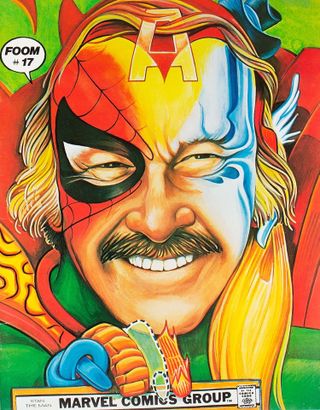
Stan Lee never worked in AI art; you won't find any kind of misguided "but if he had!" speculation here. But what you will find is a plea from this lifelong fan of comics and comic book art for Marvel Studios (and Marvel Comics) to never ever forget that the skill, style, and creativity of human artists are the definitive element that led to the success and power of the Marvel Universe.
The attempt to solidify a Stan Lee-centric narrative in a well-publicized documentary combined with Marvel Studios' first step into AI art feel like a slap in the face to the artists who strive day in and day out to bring our imaginations to life with the care and talent - both the notoriously overworked VFX artists, whose workload may be transferred to unfeeling, uncreative AI art rather than requested in a realistic timeframe, and the comic artists pouring themselves into page after page as they work their fingers to the bone for precious little recognition and compensation.
There's a key quote in the Stan Lee documentary, in the man's own words, which is the crucial takeaway from his entire telling of his life: "I created Marvel Comics with the various artists who worked on the stories, of course." Though he doesn't name anyone specific in the quote, it’s the closest he comes to fully acknowledging the importance of the artists he worked with.
The work of Jack Kirby, Steve Ditko, Don Heck, Gil Kane, John Romita, Wally Wood, Jim Steranko, Marie Severin, Stan Goldberg, and many, many more is the promethean fire that gave true life to the super-humans depicted in Marvel Comics and the foundation of the artistic legacy that still defines what it means to "Make Mine Marvel" to this day.
Marvel must never forget this human artistic element; neither the dynamic creativity Marvel’s artists bring to these now iconic heroes, nor the personal sacrifices they make and the exploitation they have suffered in pursuit of telling a good story.
It took the work of dozens of talented human creators to tell the best Marvel Comics stories of all time.
I've been Newsarama's resident Marvel Comics expert and general comic book historian since 2011. I've also been the on-site reporter at most major comic conventions such as Comic-Con International: San Diego, New York Comic Con, and C2E2. Outside of comic journalism, I am the artist of many weird pictures, and the guitarist of many heavy riffs. (They/Them)
